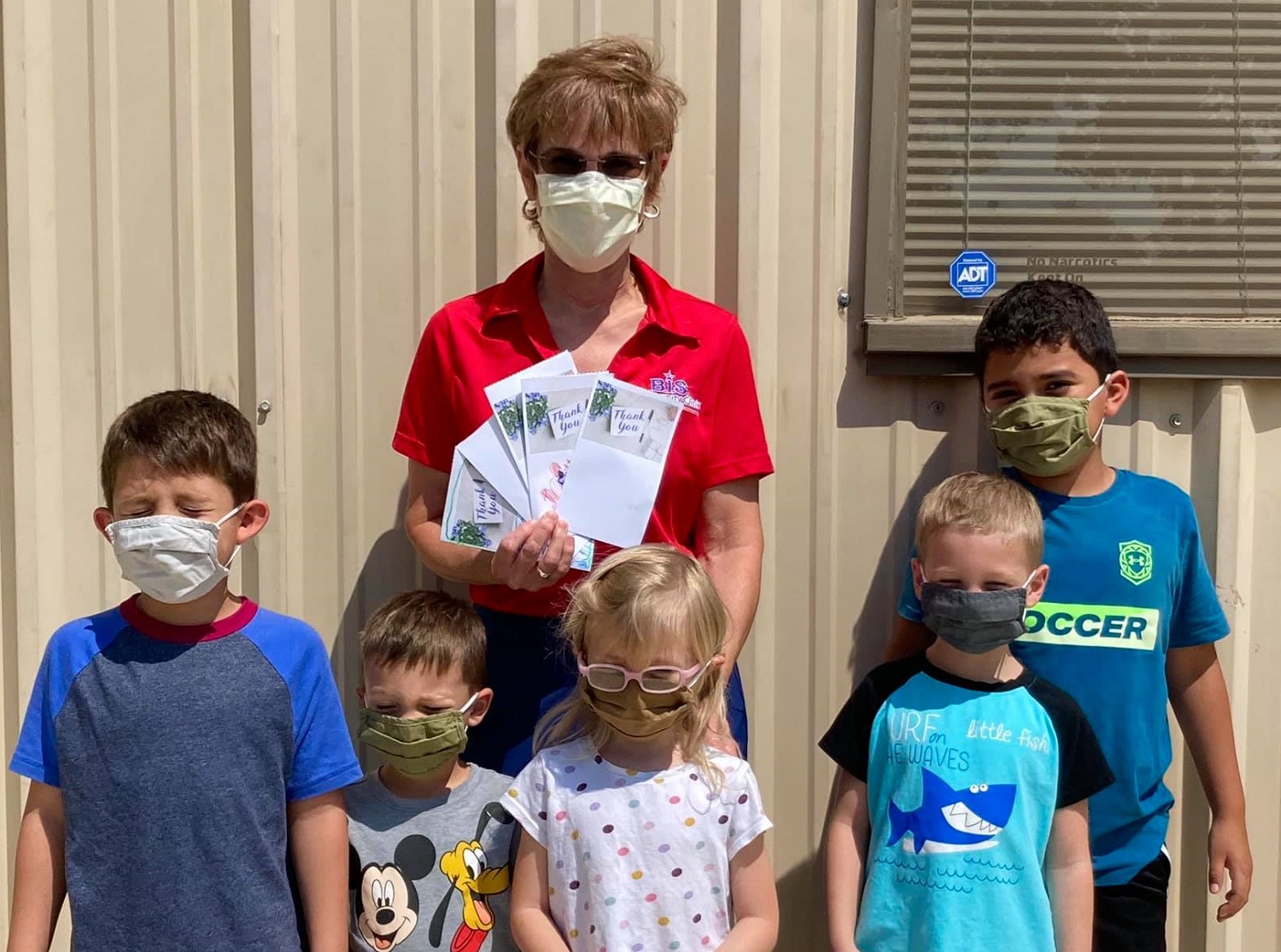


There’s only one health clinic for the northern half of Grimes County, a fairly large rural county in southeastern Texas, 80 miles northwest of Houston. At this sole clinic, there is a sole health care provider: nurse practitioner Elizabeth Ellis. On any given day she sees more than a dozen people. She manages the clinic with the help of just one front desk worker.
Back in the spring of 2020, the BIS Community Clinic, located in Bedias, Texas, almost shut down for good because of a lack of COVID-19 resources. The town has a population of less than 500 people, but the clinic serves the surrounding community so widely that some people travel 40 minutes to reach it. Many of the patients are older than 65 and have complex medical conditions. “They’ve been underserved and have major health disparities because of their lack of access to healthcare,” Ellis says. Some don’t have any healthcare until they’re old enough to qualify for Medicare. “They have five-plus, sometimes 10, sometimes 15 or more diagnoses.”
Ellis moved to Bedias after her husband wanted to retire to the town where he’d grown up visiting friends and hunting. Ellis continued her one-way, two-and-a-half hour commute to a Houston hospital until three years ago. Sick of the drive, she decided to gut a local building and turn it into the BIS Community Clinic. It’s been a pillar in the community ever since. When Ellis didn’t have the financial support or personal protective equipment she needed to serve the community during the pandemic, her neighbors banded together, donating money and hand sanitizer and cleaning supplies so the clinic could stay open.
“It was an amazing outpouring of generosity and team effort,” Ellis says. As time went on, she eventually received COVID-19 relief funding through the CARES Act and additional funding for tests from the US Health Resources and Services Administration. The Texas Organization of Rural & Community Hospitals also helped her procure masks and gowns, as did one patient who ordered supplies from overseas. But closure is still a daily worry for Ellis.
During the pandemic, Ellis has been seeing patients for their routine health needs in the morning. In the late afternoon, she moves outdoors to screen COVID-19 cases. Patients with virus-like symptoms drive up to the clinic’s parking lot, where Ellis swabs their noses, then runs a rapid antigen test in-house or sends it to a lab for a PCR test. Before and after the clinic hours, she pays house calls to patients who are too sick to leave or who don’t have transportation. Sometimes, the solo work is overwhelming. “There are days that you wonder how you got through it, and you have your moments of mild breakdown,” Ellis says. “But we’re here to serve, and we keep trudging through.”
The nurse practitioner isn’t too concerned about getting COVID-19 herself. But because she works predominantly with patients who are over 65 and her husband is also in that age range, she’s extremely cautious. “I go to work, and I go home,” she says. “We haven’t even seen my husband’s children since February.”
Working in health care isn’t the only reason she’s been taking COVID-19 seriously. Her mother, who lived in a nursing home in Mississippi, died at the start of the pandemic from complications related to the disease. “Being hit with a tragic loss of a family member at the very beginning of COVID, that really opened my eyes to how serious this virus is,” she says. She used her personal experience to educate her patients about the importance of taking precautions such as social distancing and wearing a mask.
If Ellis were to get COVID-19 herself, the clinic would have to shut down. There are no back-up providers to take her place. She’s already gotten a taste of the trouble that would bring. The clinic had to close for 10 days when the front desk worker became ill and they didn’t have an in-house test yet. In the time it took to confirm if they had the virus or not, Ellis tried to keep up with her patients through telehealth. But access was limited: Most of the people in the community don’t have high speed internet or reliable cell phone service. The clinic itself just got a fiber-optic hookup in early December.
The pandemic has exposed not only technological issues with telehealth, but also legal ones. Typically, Ellis isn’t able to schedule telehealth appointments with her patients due to restrictive privacy provisions from the federal government. The rules for rural health clinics, and many like it, were created decades before telehealth became widespread and haven’t been updated since. A temporary waiver from the Centers for Medicare & Medicaid Services allows Ellis to practice over video or the phone during the pandemic, but once the exception ends, she won’t be able to anymore. “The biggest takeaway from managing this virus and working on the front lines, especially in the rural health areas, is that some of our rules and regulations are antiquated,” she says. “We need to remove any barrier that’s prohibiting us from practicing to the top of our license.”
It’s hard enough to keep a rural health clinic running in normal times, and the pandemic puts even more strain on providers. COVID-19 stunted the clinic’s growth, and many of her existing patients are too scared to come in for an appointment. Although Ellis expects to bounce back this year and even hire a nurse assistant, she still worries about having to shut down. Seventeen rural hospitals closed in 2020, leaving people in those areas even more starved for adequate healthcare. “We’re constantly having to develop new legislation and fight to keep ourselves sustainable,” Ellis says. “There’s still a lot of groundwork to be done.”
